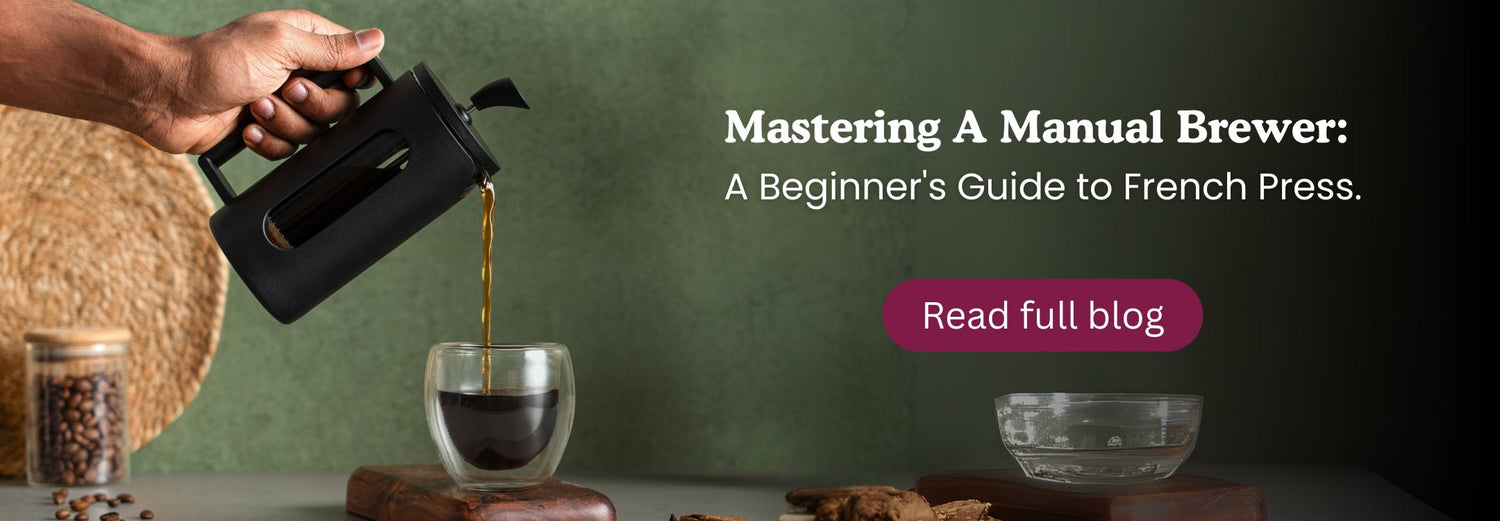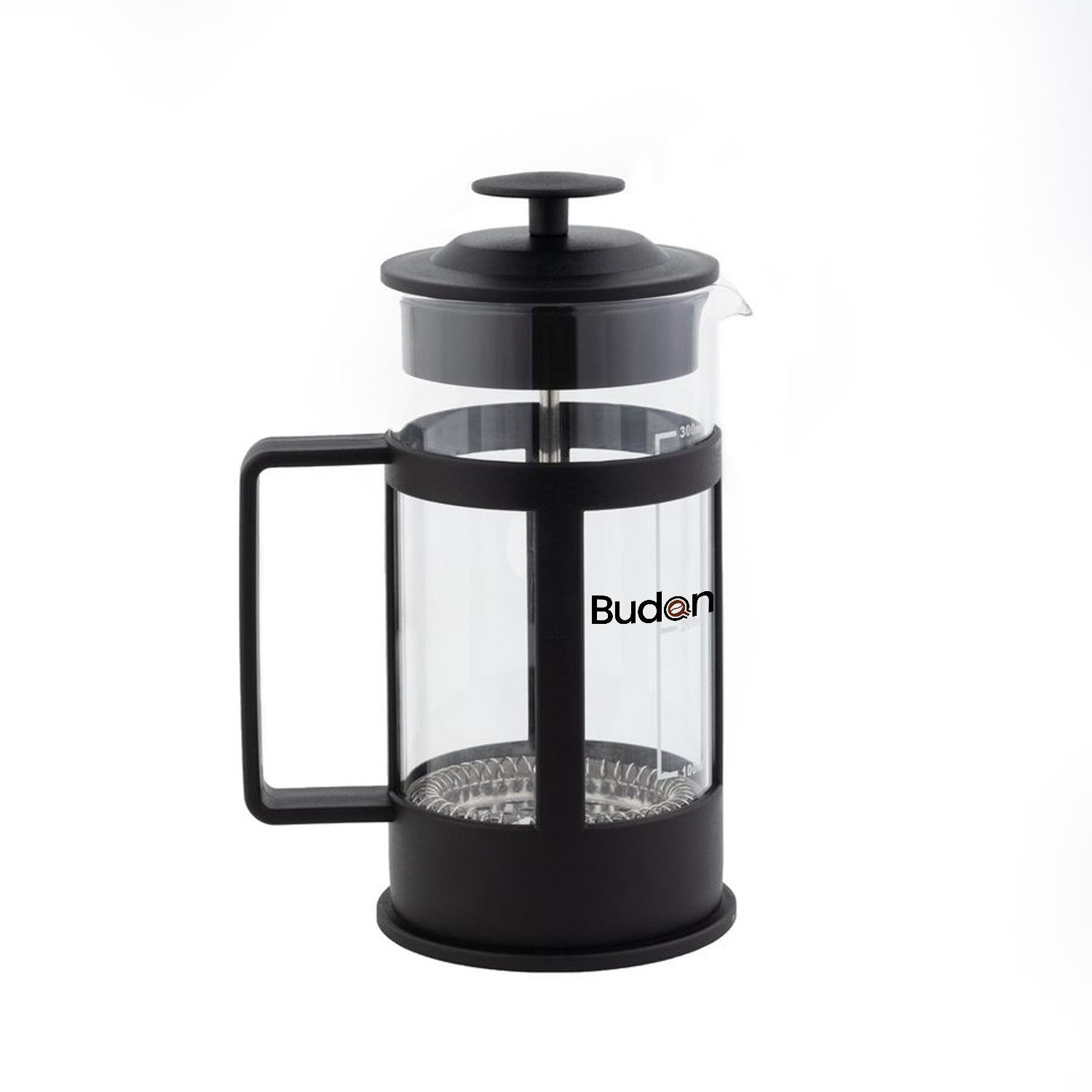Ever wondered how to brew a café‑quality cup with just a French Press and good beans? You’re in the right place. This guide will help you master the manual brew, from bean to cup with foolproof techniques and expert advice drawn from seasoned coffee lovers.
1. Why Choose the French Press?
The French Press (also called cafetière or press pot) thrives on immersion brewing. This method immerses coarse coffee grounds in water, extracting bold flavors and retaining natural oils—resulting in a rich, full-bodied brew. Its simplicity—just plunger, beaker, and coarse grind—makes it perfect for beginners while offering room to experiment.
2. The Essentials: Tools & Ingredients
What You Need:
-
French Press (glass is common; stainless steel holds heat better)
-
Burr grinder for consistent coarse grind
-
Scale (grams) and timer
- Filtered water, boiled and slightly cooled to 93–96 °C (195–205 °F
Coffee Beans:
Quality beans are essential. Start with a medium roast—balanced in flavor and caffeine. Dark roasts bring richer, deeper notes. Always grind fresh before brewing to capture aromas
3. Getting the Ratio Right: Strength & Flavor
A typical starting ratio is 1:15 (coffee to water) by weight—e.g. 20 g coffee with 300 g water. French Press allows flexibility: 1:14 for intense brews, 1:16 for milder ones.
4. Step‑by‑Step Brewing Guide
1. Preheat Everything
Pour hot water into your French Press (and cups), swirl around, and discard. This stabilizes temperature during brewing
2. Measure & Grind
Weigh beans, grind coarse (like kosher salt). Too fine = plunger resistance and bitterness
3. Bloom Time
Add about twice the coffee weight in water, stir to hydrate grounds, and wait 30–45 seconds. The “bloom” releases CO₂ from fresh beans and improves flavor extraction.
4. Fill & Stir
Pour remaining hot water fully, stir gently with a non‑metal spoon to break the crust and ensure coverage.
5. Steep
Place the lid with a plunger up. Let it brew for 4 minutes. Some choose 6 minutes for bolder taste but start with 4
6. Skim & Press (Optional Clean‑Cup Trick)
For 4 minutes, gently stir again, skim off foam or grounds from the top. Then press slowly and steadily to the bottom.
7. Serve Immediately
Pour into cups or decanter right away to avoid over‑extraction and bitterness.
5. Troubleshooting Common Issues
▸ Bitter Coffee?
-
Grind too fine
-
Steeped too long
-
Plunging or brewing too hot
Fix: Use coarser grind, shorter brew time, precise 93–96 °C water.
▸ Weak Brew?
-
Too coarse
-
Under‑extracted
-
Strength is low
Fix: Slightly finer grind, longer bloom/brew, higher ratio.
▸ Sediment in Cup?
-
Fine grinds pass through
-
Plunged too roughly
Fix: Coarser grind, smooth press, skim top.
Tips on grind‑extraction balance are supported by models on uneven extraction with too‑fine coffee—coarseness ensures even brew.
6. Flavor Tweaks & Variations
Once you master the basics, elevate your brew:
Spice it up:
Add ground cinnamon, nutmeg, cardamom, or cocoa powder with coffee grounds. These infusions unlock new dimensions in every sip.
Cold‑Brew with French Press:
Use room‑temp water, coarse grounds, and steep overnight (8–12 hrs) in the fridge for refreshing cold brew.
Clean‑Cup Method (James Hoffmann):
Grind finer, bloom fully, stir for 4 minutes, gently skim the surface, cover (don’t press), wait an additional minute, then press. This reduces sediments and brightens flavors.
7. Maintenance: Clean & Care
Coffee oils left behind can taint future brews. After use, remove grounds, rinse all parts with warm soapy water, and air dry thoroughly
Disassemble filter occasionally—clean mesh, spring, and gasket.
8. Materials & Variants: Know Your Press
Choose between:
-
Glass: lets you watch brew progress; fragile
-
Stainless steel: guards heat, robust
-
Ceramic/plastic: stylish or travel-friendly
Special features:
-
Double filters like in Espro models minimize sediment
-
Travel and electric versions offer portability and automation
9. Why Manual Brewing Matters
-
Full control over each variable: grind, ratio, time, temperature.
-
Skill development: you learn how each tweak affects flavor.
-
Stronger sensory connection: you smell, see, time, and press—an immersive ritual.
Ultimately, this ease of mastery and enjoyment is why manual brewers like the French Press remain beloved among home brewers.
10. Your Next Steps: Practice & Explore
-
Start with baseline recipe: 20 g coffee, 300 g water, 4‑minute steep.
-
Adjust variables—try 30‑second bloom, 6‑minute steep, or tweak ratios.
-
Try variants: cold brew, spices, clean‑cup method.
-
Keep notes—track what you changed and how your cup tasted.
-
Repeat, taste, and refine—coffee brewing is a rewarding journey.
Final Words
The French Press is much more than a simple coffee maker—it’s a gateway to learning, experimenting, and ultimately mastering the art of coffee. By fine‑tuning grind size, bloom, steep time, pressing technique, and cleanliness, you’re in full control of every cup.
Every aspect you improve brings clarity, richness, and complexity to your brew. And once you grasp the fundamentals, the world of French Press becomes your playground: try new beans, spices, cold brew, and buttoned‑up techniques.
Now it’s your turn: take this guide, brew a cup, make notes, repeat—and enjoy the rewarding journey of mastering a manual brewer.


























